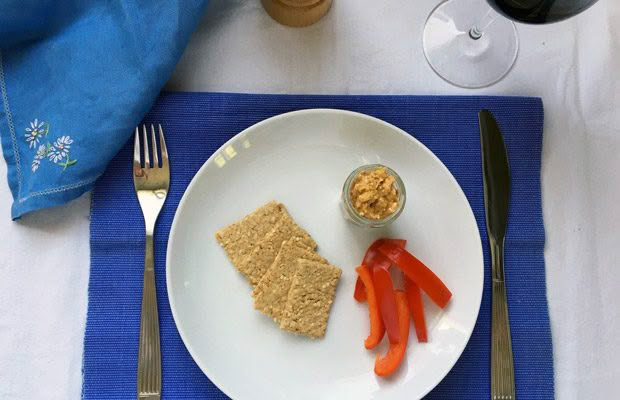Lucy Corry’s Blog: Bring back the tablecloth
The tablecloth has a magical ability to add just enough polish to maintain the façade of normality, says Lucy Corry.
Last night I performed a magic trick. With a bolt of fabric and a flick of the wrist, I transformed my messy, cluttered workspace into a chic, welcoming dinner table.
Where, moments before I had a laptop and various papers spread out for miles, there was a gleaming expanse of white damask that looked ready for candles, cutlery and an intimate dinner for three. Under the circumstances, this was no mean feat.
We’re moving house this week and for reasons too complex to explain, our outdoor table is temporarily doing double duty as our dinner table and my desk. The surface is weather-beaten and one leg sticks out at an odd angle, so the general vibe is a bit ropey to say the least.

I remembered my mother telling me long ago that setting the table was a key weapon in the toolkit of a busy domestic goddess. Her rationale was that a well-laid table created the illusion of readiness; that it made it look like the next meal might not be far away, even if the truth was quite different. As with many things, she’s turned out to be right. Setting the table is a kind of fake it ‘til you make it life hack that has multiple benefits for all concerned.
Once you set the table, it feels like everything is under control. Or at least, you can pretend it is. I think it’s the textile equivalent of slapping on a bit of lipstick at the traffic lights. It’s just enough polish to maintain the façade of normality.
Rediscovering the power of the tablecloth has reconnected me to the orderliness of my childhood. When I was growing up, we always ate at the table. A stand-up breakfast was unthinkable, let alone a TV dinner. Eating at the table set a kind of rhythm to the day. It sounds slightly ridiculous now, but we usually had a different tablecloth at breakfast and dinner.

The breakfast one I remember most clearly had a brown and white floral pattern that hid a multitude of sins. In the evenings, things were mercifully more muted. We had brown leather placemats too (it was the 70s and 80s) and table napkins. If it was An Occasion, a special lace-edged cloth with matching napkins was stretched across the table. I loved that tablecloth and all it signified (staying up late, exciting food, laughter).
Alas, I can’t say that I’ve upheld the same standards in my week of tablecloth adoption. The one I’ve been using for all meals may be embossed white damask, but there’s a hole in one corner and it bears the wear and tear of many meals (that turmeric stain is never coming out). However, since I found it in an op shop about 20 years ago and it’s borne witness at many ‘fancy’ dinners, I think it’s lasted extremely well. I do have a fancier one on hand – a never-used, 30-year-old embroidered and appliqued tablecloth inherited from my husband’s great-aunt – but I can’t bring myself to use it just yet.

Given that 2020 has been the year of working from home/living at work though, I think the time is coming. I’m ready to do my part for the fabric industry by leading the charge to bring back the tablecloth. I can see the advertising campaign now – hipster interior stylists will appear in magazines telling us how a new tablecloth will transform a space in the same way that a different jacket or jewellery can take an outfit from day to night. Magazine headlines will proclaim that ‘napery is now’.
Lifestyle experts appear on TV shows and discuss how tablecloths can help us make the mental transition from ‘work’ to ‘home’, even if we’re not leaving the room. Influential Instagrammers will realise that tablecloths collect crumbs and spills, provide a place for children to wipe their hands and provide endless styling opportunities.
The revolution will be textile-ised. Are you ready?
MORE HERE
Lucy Corry’s Blog: Say cheese (and hello to an easy mascarpone recipe)

